
伤口世界
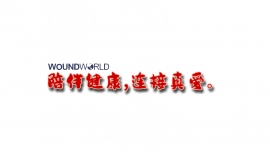
- 星期二, 04 6月 2024
微针围刺配合氨甲环酸治疗黄褐斑疗效观察
马必委,黄玉环,林豪,潘钦关
(苍南县第二人民医院,浙江325802)
【摘要】
目的
比较微针围刺配合氨甲环酸与单纯口服氨甲环酸治疗黄褐斑的疗效差异。方法将60例女性黄褐斑患者随机分为治疗组和对照组。每组30例。治疗组采用微针围刺配合氨甲环酸治疗,对照组采用单纯口服氨甲环酸治疗。连续治疗4个月后评定疗效。结果治疗组总有效率为96.7%,对照组为73.3%,两组比较差异具有统计学意义(P<O.05)。结论微针围刺配合氨甲环酸是一种治疗黄褐斑的有效方法。
【关键词】
针刺疗法:黄褐斑:围刺:氨甲环酸:针药并用
【中图分类号】R246.7
【文献标志码】A
DOI:10.13460/j.issn.i005—0957.2014.05.0433
Therapeutie Observation of Surround Acupuncture with Micro-needles plus Tranexamic Acid for Chloasma MA Bi-weiHUANG Yu-huan, LIN Hao, PAN Qin-guan. The Second People's Hospital ofCangnan,Zhejiang 325802,China
Abstractl Objective To compare the therapeutic efficacies of surround acupuncture with micro-needles plus Tranexamic Acidand single oral administration of Tranexamic Acid in treating chloasma.
Method Sixty female patients with chloasma wererandomized into a treatment group and a control group, 30 in each group. The treatment group was intervened by surroundacupuncture with micro-needles plus Tranexamic Acid, while the control group was only by oral administration of Tranexamic AcidThe therapeutic eficacies were evaluated after successive 4-month treatments.
Result The total efiective rate was 96.7% in thetreatment group versus 73.3% in the control group, and the difference was statistically significant (P<0.05). Conclusion Surroundacupuncture with micro-needles plus Tranexamic Acid is an effective approach in treating chloasma.
【Key words】Acupuncture therapy, Chloasma, Surround acupuncture, Tranexamic Acid; Acupuncture medication combined
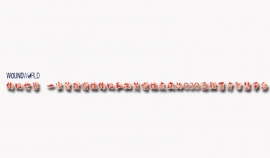
- 星期一, 03 6月 2024
微针联合皮内注射氨甲环酸谷胱甘肽治疗黄褐斑的疗效观察
唐华明 1 ,美合日阿依 1 ,张成英 2 ,周 杰 2 ,李 超 2(1. 伊丽莎白整形美容医院,新疆 乌鲁木齐,830001;2. 天使之翼整形美容医院,四川 成都,610017 )
【摘 要】 目的 评价氨甲环酸、谷胱甘肽不同给药方式用于治疗黄褐斑的临床效果。方法 从 2018 年 8 月 -2019 年 8 月,选择 MLA 分级 黄褐斑患者 117 例,随机分为微针组(A 组)、皮内组(B 组)和联合组(C 组)各 39 例;谷胱甘肽和氨甲环酸注射液分别采用不同方式:A组微针导入,B组皮内注射,C组联合方式给药。结果 C组患者各观察点的治疗效果明显优于 A、B 组(P 均〈0.05),各组患者不良反应发生率无明显差异。结论 谷胱甘肽和氨甲环酸注射液可有效治疗黄褐斑,联合给药方式优于单独给药。
【关键词】微针 皮内注射 氨甲环酸 谷胱甘肽 黄褐斑
DOI:10.19593/j.issn.2095-0721.2020.01.013
Observation on the efficacy of microacupuncture and intradermal injection of tranexamic acid and glutathione in the treatment of chloasma TANG Hua-ming1 , MEIHERIAYI1 , ZHANG Cheng-ying2 , ZHOU Jie2 , LI Chao2 (1.Urumqi Elizabeth plastic surgery hospital, Xinjiang Uygur Autonomous region, 830001, China; 2. Angel Wing plastic surgery and Beauty Hospital, Sichuan Province, 610017, China)
[ABSTRACT] Objective To evaluate the clinical effect of tranexamic acid and glutathione in the treatment of chloasma.
Methods From August 2018 to August 2019, 117 patients with mla-graded chloasma were selected and randomly divided into the microneedle group (group A), intradermal group (group B) and combined group (group C), 39cases each. Glutathione injection and tranexamic acid injection were administered by microneedle in group A, intradermal injection in group B and combined administration in group C, respectively.
Results The treatment effect of each observation point of patients in group C was significantly better than that of group A and group B (P < 0.05), and there was no significant difference in the incidence of adverse reactions in each group.
Conclusion
Glutathione and tranexamic acid injection can effectively treat chloasma.
[KEY WORDS] Microneedle; intradermal; injection of tranexamic; acid glutathione; chloasma
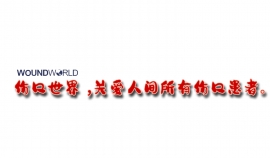
- 星期五, 31 5月 2024
纳米微针导入0.5%氨甲环酸溶液对中国女性面部皮肤暗沉的疗效研究
吴亭妍1 ,周炳荣1 ,易 飞1 ,陶艳玲1 ,苗颖颖1 ,倪 娜1 ,马仁燕1 ,许 阳1 ,徐 百2 ,骆 丹1
(1.南京医科大学第一附属医院皮肤科 江苏 南京 210029;2.苏州纳通生物纳米技术有限公司 江苏 苏州 215000)
[摘要]目的:研究经纳米微针导入0.5%氨甲环酸溶液对中国女性面部皮肤暗沉的疗效及安全性。方法:募集60名无基础病的健康临床受试者,随机分为两组,每组30名。生理盐水组:受试者全面部使用纳米微针导入生理盐水;0.5%氨甲环酸溶液组:受试者全面部使用纳米微针导入0.5%氨甲环酸溶液。两组受试者均每周接受1次治疗,共治疗2个月,每周两组受试者接受治疗前及治疗后72h都检测经皮水分丢失(trans-epidermal water loss,TEWL)、角质层含水量、红斑量、黑素及皮肤弹性,拍摄每组受试者治疗前后面部照片。通过皮肤状态问卷调查受试者满意度及不良反应,治疗结束后1个月、2个月复测TEWL、角质层含水量、红斑量、黑素及皮肤弹性。结果:生理盐水组治疗后72h经皮水分丢失、角质层含水量、红斑量、皮肤弹性与0.5%氨甲环酸溶液组无显著性差异;生理盐水组治疗后黑素数值显著高于0.5%氨甲环酸溶液组;生理盐水组受试者面部照片治疗前后无显著性差异,0.5%氨甲环酸溶液组治疗后面部照片明显比治疗前肤色白皙;生理盐水组受试者及医生满意度显著低于0.5%氨甲环酸溶液组;生理盐水组及0.5%氨甲环酸溶液组皆无不良反应;0.5%氨甲环酸溶液组治疗后1个月的黑素值与初次治疗前的黑素值有显著性差异(P<0.05),治疗后2个月的黑素值与初次治疗前测得的黑素值无统计学差异。
结论:纳米微针导入0.5%氨甲环酸溶液可明显改善中国女性面部皮肤暗沉。
[关键词]纳米微针;氨甲环酸;生理盐水;黑素;皮肤暗沉
[中图分类号]R364.2+ 3 [文献标志码]A [文章编号]1008-6455(2016)09-0087-04
Effect of 0.5% tranexamic acid solution into skin with microneedles for facial skin dull of Chinese women
WU Ting-yan1 , ZHOU Bing-rong1 , YI Fei1 , TAO Yan-ling1 , MIAO Ying-ying1 , NI Na1 , MA Ren-yan1 , XU Yang1 , XU Bai2 , LUO Dan1
(1. Department of Dermatology, the First Affiliated Hospital with Nanjing Medical University, Nanjing 210029, Jiangsu, China; 2. Suzhou Nanomed Skincare Inc , Suzhou 215000, Jiangsu, China)
Abstract: Objective To observe the clinical effect of delivering 0.5% tranexamic acid solution into skin with microneedles
for facial skin dull of Chinese women.
Methods A total of 60 healthy subjects were enrolled for this study and were respectively divided into 2 groups. 60 cases volunteers were treated by deliverying solution into skin through micropores which the microneedles made. In the first group, volunteers were treated by deliverying physiological saline solution into skin . In the second group, volunteers were treated by deliverying 0.5% tranexamic acid solution into skin . One session every 7 days, all 60 volunteers were treated 8 times. We asses its effect by questionaires for subjective evaluation and side effect, and objective evaluation with digital skin analyzers to record raw pictures and data before and after treatment. Retesting TEWL, skin hydration, erythema dose, melanin value and skin elasticity at the ending of 1, 2 months after all treatment.
Results There was no significant difference in TEWL, skin hydration , erythema dose, melanin and skin elasticity between the saline group and the 0.5% tranexamic acid solution group. Melanin of 0.5% tranexamic acid solution group was relatively lower than the saline group. There was no significant difference in facial photo before and after treatment in the saline group, skin colour was obviously pale compared to that before treatment in the 0.5% tranexamic acid solution group. The subjects and doctors’ satisfaction of the saline group was relatively lower than that of the 0.5% tranexamic acid solution group . There was no adverse reaction report both in the saline group and the 0.5% tranexamic acid solution group. In the 0.5% tranexamic acid solution group , there were significant differences in melanin value before and 1 month after the treatment , while there were no statistical differences before and 2 month after the treatment .
Conclusion Delivering 0.5% tranexamic acid solution into skin with microneedles can significantly improve the facial skin dull of Chinese women .
Key words: nanometer microneedle; tranexamic acid ; physiological saline solution ; melanin value; facial skin dull
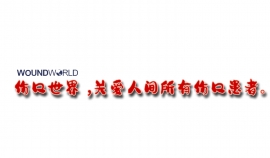
- 星期四, 30 5月 2024
口服氨甲环酸治疗黄褐斑的临床观察及护理体会
郭 丹
吉林师范大学校医院,吉林 四平 136000
作者简介:郭丹(1979-),吉林师范大学校医院主管护师。
【摘 要】 目的 探究口服氨甲环酸治疗黄褐斑的临床疗效以及护理方法。方法 选取我院收治的134 例黄褐斑患者为研究对象,将其随机分成观察组和对照组,各 67 例,给予对照组患者维生素和氢醌治疗;给予观察组患者氨甲环酸和氢醌治疗。给予两组患者心理护理、生活指导、沟通交流护理干预。治疗 2 个疗程后,观察两组患者的临床疗效。结果 观察组患者总有效率为 73.13%,对照组总有效率为 46.27%,组间对比,差异具有统计学意义(P < 0.05)。结论 口服氨甲环酸治疗黄褐斑疗效确切,配合良好的护理干预措施,有助于患者积极配合临床治疗,促进患者尽快恢复。
【关键词】 氨甲环酸;黄褐斑;护理干预;疗效
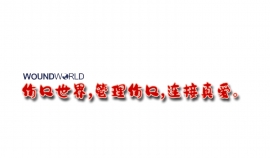
- 星期三, 29 5月 2024
Poly-D,L-Lactic Acid Filler Increases Extracellular Matrix by Modulating Macrophages and Adipose-Derived Stem Cells in Aged Animal Skin
Seyeon Oh 1,†, Suk Bae Seo 2,†, Gunpoong Kim 3 , Sosorburam Batsukh 1,4, Chul-Hyun Park 5 , Kuk Hui Son 5,* and Kyunghee Byun 1,4,6,*
1 Functional Cellular Networks Laboratory, Graduate School and Lee Gil Ya Cancer and Diabetes Institute, College of Medicine, Gachon University, Incheon 21999, Republic of Korea
2 SeoAh Song Dermatologic Clinic, Seoul 05557, Republic of Korea
3 VAIM Co., Ltd., Okcheon 29055, Republic of Korea
4 Department of Anatomy & Cell Biology, College of Medicine, Gachon University, Incheon 21936, Republic of Korea
5 Department of Thoracic and Cardiovascular Surgery, Gachon University Gil Medical Center, Gachon University, Incheon 21565, Republic of Korea
6 Department of Health Sciences and Technology, Gachon Advanced Institute for Health & Sciences and Technology (GAIHST), Gachon University, Incheon 21999, Republic of Korea
* Correspondence: 该Email地址已收到反垃圾邮件插件保护。要显示它您需要在浏览器中启用JavaScript。 (K.H.S.); 该Email地址已收到反垃圾邮件插件保护。要显示它您需要在浏览器中启用JavaScript。 (K.B.); Tel.: +82-32-460-3666 (K.H.S.); +82-32-899-6511 (K.B.)
† These authors contributed equally to this work.
Abstract: Poly-D,L-lactic acid (PDLLA) filler corrects soft tissue volume loss by increasing collagen synthesis in the dermis; however, the mechanism is not fully understood. Adipose-derived stem cells (ASCs) are known to attenuate the decrease in fibroblast collagen synthesis that occurs during aging, and nuclear factor (erythroid-derived 2)-like-2 factor (NRF2) increases ASCs survival by inducing M2 macrophage polarization and IL-10 expression. We evaluated the ability of PDLLA to induce collagen synthesis in fibroblasts by modulating macrophages and ASCs in a H2O2 -induced cellular senescence model and aged animal skin. PDLLA increased M2 polarization and NRF2 and IL-10 expression in senescence-induced macrophages. Conditioned media from senescent macrophages treated with PDLLA (PDLLA-CMMΦ) reduced senescence and increased proliferation and expression of transforming growth factor-β (TGF-β) and fibroblast growth factor (FGF) 2 in senescence-induced ASCs. Conditioned media from senescent ASCs treated with PDLLA-CMMΦ (PDLLA-CMASCs) increased the expression of collagen 1a1 and collagen 3a1 and reduced the expression of NF-κB and MMP2/3/9 in senescence-induced fibroblasts. Injection of PDLLA in aged animal skin resulted in increased expression of NRF2, IL-10, collagen 1a1, and collagen 3a1 and increased ASCs proliferation in aged animal skin. These results suggest that PDLLA increases collagen synthesis by modulating macrophages to increase NRF2 expression, which stimulates ASCs proliferation and secretion of TGF-β and FGF2. This leads to increased collagen synthesis, which can attenuate aging-induced soft tissue volume loss.
Keywords: aged skin; NRF2; macrophage; collagen; elastic fiber
Citation: Oh, S.; Seo, S.B.; Kim, G.; Batsukh, S.; Park, C.-H.; Son, K.H.; Byun, K. Poly-D,L-Lactic Acid Filler Increases Extracellular Matrix by Modulating Macrophages and Adipose-Derived Stem Cells in Aged Animal Skin. Antioxidants 2023, 12, 1204. https://doi.org/10.3390/ antiox12061204
Academic Editor: Alessandra Napolitano
Received: 14 April 2023
Revised: 28 May 2023
Accepted: 29 May 2023
Published: 1 June 2023
Copyright: © 2023 by the authors. Licensee MDPI, Basel, Switzerland. This article is an open access article distributed under the terms and conditions of the Creative Commons Attribution (CC BY) license (https:// creativecommons.org/licenses/by/ 4.0/).
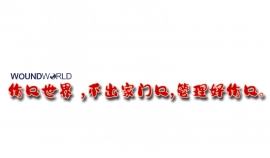
- 星期二, 28 5月 2024
胶原蛋白作为医用生物材料对缺损组织修复、再生及重建的作用与意义
胡 康1,张 伟2 ( 1广东冠昊生物医用材料开发有限公司,广东省广州市 510530;2冠昊生物科技股份有限公司,再生型医用植入器械国家工程实验室,广东省广州市 510530)
DOI:10.3969/j. issn.2095-4344.0650 ORCID: 0000-0002-7923-2706(胡康)
胡康,男,1992 年生,湖北省仙桃市人,汉族,2017年华南理工大学毕业,硕士,主要从事医用生物材料的研究与开发研究。
通讯作者:张伟,中级工程师,冠昊生物科技股份有限公司研发部,广东省广州市 510530
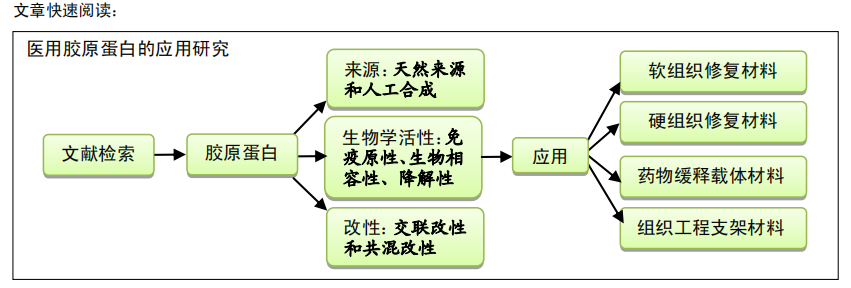
文题释义:
胶原蛋白:是生物高分子材料,为动物结缔组织的主要成分,是哺乳动物体内含量最多、分布最广的功能性蛋白,占蛋白质总量的 30%左右;具有良好的生物相容性、低免疫原性和组织可降解吸收性,在创面止血、愈合,缺损组织的填充、修复及重建,药物载体和组织工程等方面有广泛应用,是理想的医用生物材料。医用生物材料:是用来对生物体进行诊断、治疗、修复,或替换其病损组织、器官及增进其功能的材料,包括金属、陶瓷、高分子、复合材料等。
摘要
背景:胶原蛋白因具有低免疫原性,良好的生物相容性和生物降解性,在医用生物材料方面得到广泛应用。
目的:综述近年来国内外胶原蛋白的来源、生物活性、改性及其在医用生物材料方面的应用进展。
方法:通过计算机检索 2010 至 2018 年 PubMed、Elsevier、Springerlink、中国知网等数据库发表的相关文章,英文检索词为“collagen,crosslinking,immunogenicity,biocompatibility,tissue engineering”,中文检索词为“胶原蛋白,交联,免疫原性,生物相容性,组织工程”。
结果与结论:胶原蛋白主要从动物肌腱、皮肤、尾巴等组织中提取获得的,具有良好生物相容性、低免疫原性和降解性等特性,但缺乏足够的机械强度。交联改性或与其他生物材料复合使用均可改善胶原蛋白的机械性能。目前,胶原蛋白已被广泛应用于止血剂与创面敷料、生物补片、骨修复材料、药物释放载体及作为组织工程支架等方面;临床使用显示,胶原蛋白对缺损组织的修复、再生及重建有着显著促进作用。
关键词:
胶原蛋白;免疫原性;生物相容性;生物降解性;交联;组织工程;生物材料
主题词:
胶原;交联试剂;组织工程
中图分类号:R459.9;R318
基金资助:
国家重点研究计划生物医用材料研发与组织器官修复替代重点专项(2016YFC1103202)
Collagen as a medical biomaterial in tissue repair, regeneration and reconstruction
Hu Kang1 , Zhang Wei2 ( 1Guangdong Guanhao Biomedical Materials Development Co., Ltd., Guangzhou 510530, Guangdong Province, China; 2Guanhao Biotech Co., Ltd., National Engineering Laboratory for Regenerative and Implantable Medical Devices, Guangzhou 510530, Guangdong Province, China)
Hu Kang, Master, Guangdong Guanhao Biomedical Materials Development Co., Ltd., Guangzhou 510530, Guangdong Province, China
Corresponding author:Zhang Wei, Mid-level engineer, Guanhao Biotech Co., Ltd., National Engineering Laboratory for Regenerative and Implantable Medical Devices, Guangzhou 510530, Guangdong Province, China
collagen. Nowadays, collagen is widely used as hemostatic and wound dressing, biological repair patches, bone repairing materials, drug
release carriers and tissue engineering scaffolds, which has a significant role in the clinical repair, regeneration and reconstruction of tissue
Subject headings: Collagen; Cross-Linking Reagents; Tissue Engineering
Funding: the Major Project of the National Key Research Plan for Biomedical Materials Development and Tissue Organ Repair, Replacement, No. 2016YFC1103202
